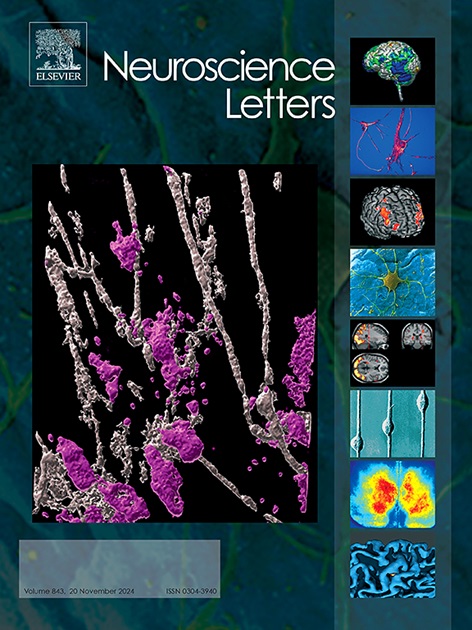单侧给药后神经元示踪剂的双侧转运:潜在外周机制的研究。
IF 2.5
4区 医学
Q3 NEUROSCIENCES
引用次数: 0
摘要
先前的研究表明,将A型肉毒杆菌神经毒素注入神经损伤对侧的须垫后,疼痛减轻。它进一步显示了双侧三叉神经节神经元的定位,表明三叉神经之间可能存在联系。因此,本研究旨在探讨左右三叉神经节之间的潜在联系,考虑到它们在解剖学上的接近性和这些结构之间可能的神经相互作用。氟金(FG)神经元示踪剂单侧注入须垫后,可定位于左右三叉神经节(TG)的神经元。相比之下,秋水仙碱(CCh)给药或中线切口手术后,对侧神经节FG定位明显减少。此外,直接注射到三叉神经节的FG只局限于同侧。此外,全身给药FG显示其定位不仅在双侧TG神经元内,而且在双侧背根神经节(DRG)神经元内,与须垫注射后的结果一致。这些发现表明,双侧氟金转运发生在外周水平,可能是通过其从注射部位扩散到对侧须垫和/或神经轴突通过中线交叉。进一步的研究需要明确具体的外周通路和探索双侧神经连接。本文章由计算机程序翻译,如有差异,请以英文原文为准。

Bilateral transport of neuronal tracer after unilateral administration: Investigation of potential peripheral mechanism
Previous studies have shown pain attenuation after the administration of botulinum neurotoxin type A into the whisker pad contralateral to the nerve injury. It further showed localization in the neurons of the bilateral trigeminal ganglia, indicating a possible connection between the trigeminal nerves. Thus, this study aimed to investigate the potential link between the right and left trigeminal ganglia, considering their anatomical proximity and the possible neural interactions between these structures. The fluorogold (FG) neuronal tracer was localized in the neurons of both the right and left trigeminal ganglia (TG) after unilateral injection into the whisker pad. In contrast, there was a substantial decrease in FG localization in the contralateral ganglion following colchicine (CCh) administration or after midline incision surgery. Moreover, FG injected directly into the trigeminal ganglion was exclusively localized on the ipsilateral side. Additionally, systemic administration of FG revealed its localization not only within the bilateral TG neurons but also in the bilateral dorsal root ganglia (DRG) neurons, mirroring the findings following whisker pad injection. These findings suggest that bilateral transport of fluorogold occurs at the peripheral level, possibly through its diffusion from the injection site to the contralateral whisker pad and/or nerve axonal crossover through the midline. Further studies are required to clarify the specific peripheral pathways and explore the bilateral nerve connections.
求助全文
通过发布文献求助,成功后即可免费获取论文全文。
去求助
来源期刊

Neuroscience Letters
医学-神经科学
CiteScore
5.20
自引率
0.00%
发文量
408
审稿时长
50 days
期刊介绍:
Neuroscience Letters is devoted to the rapid publication of short, high-quality papers of interest to the broad community of neuroscientists. Only papers which will make a significant addition to the literature in the field will be published. Papers in all areas of neuroscience - molecular, cellular, developmental, systems, behavioral and cognitive, as well as computational - will be considered for publication. Submission of laboratory investigations that shed light on disease mechanisms is encouraged. Special Issues, edited by Guest Editors to cover new and rapidly-moving areas, will include invited mini-reviews. Occasional mini-reviews in especially timely areas will be considered for publication, without invitation, outside of Special Issues; these un-solicited mini-reviews can be submitted without invitation but must be of very high quality. Clinical studies will also be published if they provide new information about organization or actions of the nervous system, or provide new insights into the neurobiology of disease. NSL does not publish case reports.
 求助内容:
求助内容: 应助结果提醒方式:
应助结果提醒方式:


